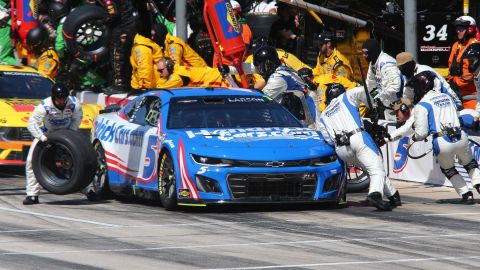There is no debating that vehicles now are safer than they’ve ever been. But safety features that are required today, once were major leaps forward for the automotive industry.
The evolution of car safety could be likened to the process of building a home: Brick by brick, step by step. Overall vehicle safety has improved to the point that an entire family can survive a relatively high-speed impact without serious injury.
With the help of information provided by TitleMax, we decided to wind back the clock, and look at some of the most-important innovations in automotive history.
Electric headlights (1889)
Hey, you have to crawl before you walk. And, if you ask us, you have to see before you can drive. First appearing on the Columbia electric car in 1889, the electric headlight was preceded by headlamps that worked by burning acetylene or kerosene in front of mirrors.
First speedometer (1901)
Okay, cars from the early 20th century didn’t go fast enough to warrant speed monitoring. Nevertheless, Oldsmobile introduced the first automobile speedometer in 1901, but we doubt it featured triple-digit numbers like the gauges of today.
Laminated safety glass (1930)
We’re surprised it took this long, but better late than never. Introduced by Ford just before for the Great Depression, laminated safety glass prevents the windshield from shattering in the event of a collision.
Disc brakes (1949)
Chrysler made the Imperial come standard with anti-lock brakes in 1971, which is quite important. But in 1949, it made the Imperial the first vehicle to come standard with 4-wheel disc brakes, which is also quite important. Since disc brakes came first, and help you stop sooner, they win.
Crumple zone (1951)
First patented by Mercedes-Benz in 1951, crumple zones absorb the energy from an impact, so that the people inside the vehicle don’t have to.
Three-point seatbelt (1959)
Leave it to Sweden and Volvo. Laws requiring seatbelts weren’t in place in Europe or the U.S. until the 1960s, so Volvo really was ahead of the curve with the introduction of the three-point belt in 1959.
Headrests (1968)
Once again, Volvo’s got you covered. Designed to limit whiplash in the event of a collision, Volvo introduced headrests as standard equipment in 1968. They probably didn’t anticipate that annoying little kids everywhere would be pulling them out of seats, but childish behavior probably isn’t a thing in Sweden.
Airbags (1973)
Introduced by General Motors in 1973, the first commercially available airbags didn’t do so hot. They eventually were shelved, but were a landmark innovation nonetheless. There have been expansions of the technology, like Volvo’s development of the side-impact protection system in the early 1990s, but GM made it all possible.
Backup camera (2001)
First introduced by Nissan’s luxury brand Infiniti at the start of the new millennium, backup cameras are available in nearly every manufacturers’ new vehicles today. Although many use it to make parking easier, the camera is a valuable tool in making sure you’re not about to back into anyone.
Collision prevention (2009)
This technology is being expanded seemingly each minute, but it was first introduced by Volvo in 2009 as emergency brake assist. The system works by automatically applying brakes to prevent a detected collision; although other manufacturers’ versions enable the vehicle to drive itself out of harms way.
Thumbnail photo via Pexels




